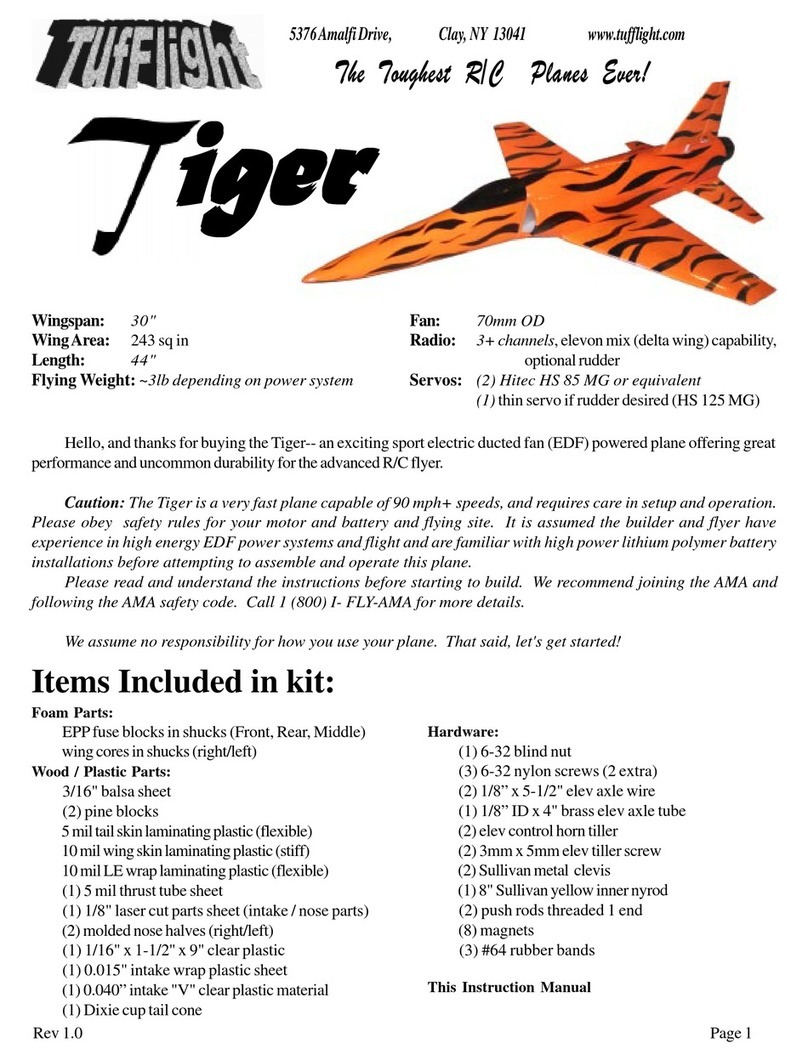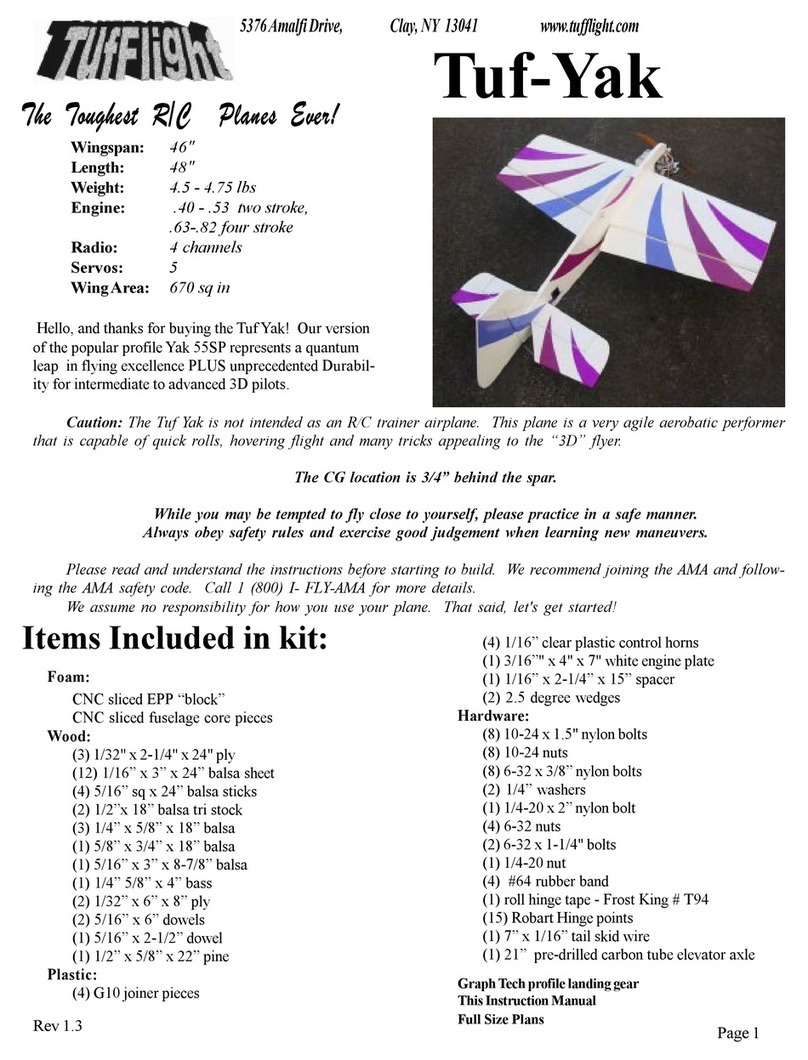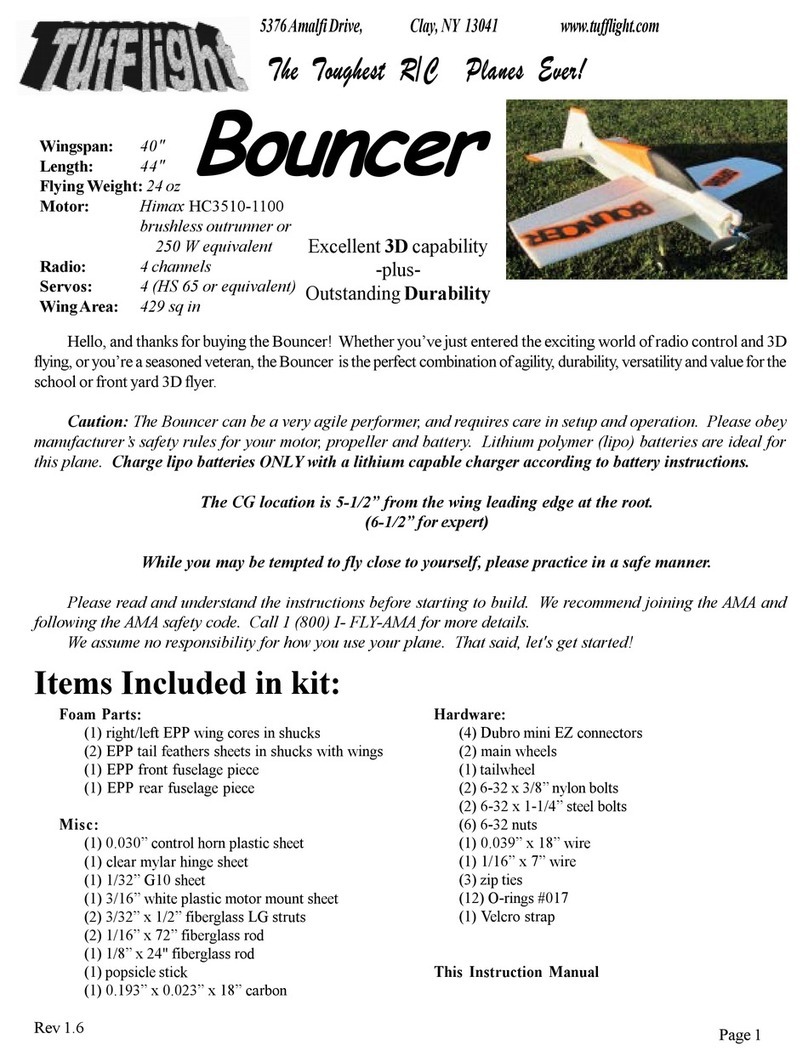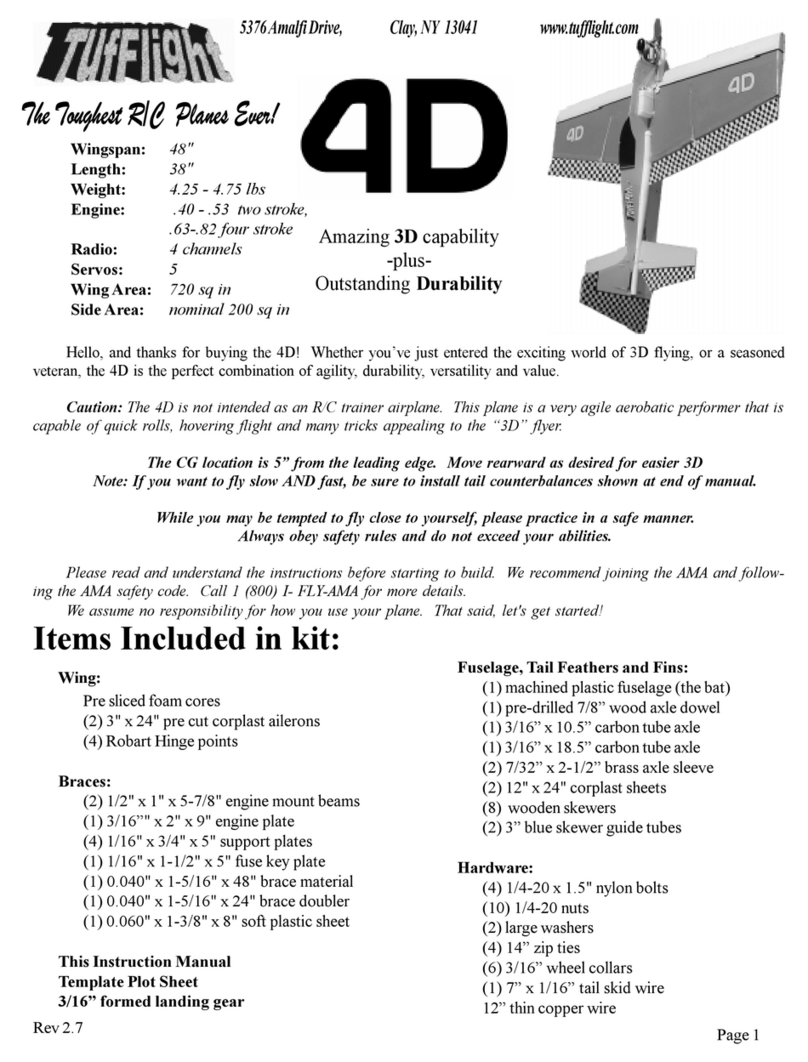
Page2
Items needed to complete:
Equipment:
3cell(3S)800 - 1500 mAH Lithium polymer
batterycapableof13Acontinuousdraw
2servos:HitecHS 55 or equivalent
Transmitter(TX)capableofelevonmixing
3+channel microreceiver(RX)
batteryconnector
Adhesives:
QuickGrip(availableat
Walmartincraftsection)
Maskingtape
3/4”rolloffiberglass
reinforcedpacking tape
HelpfulTools:
40gritsandpaperon block
(availableatauto
finishingstoresandSears)
hobbyknife/utilityknife
scrapof sheet rock as a “cuttingboard”
solderingiron,solder
shrinktubeinsulation
soldering“jig”(ie,extrapairofhands)
heatgun
“hemostattype”pliers
Phillipsheadscrewdriver
straightscrewdriver
standardpliers
smallclamp
wirecutters
DremelToolw/drum sander
felttippen
ruler/straightedge
maskingtape
scissors
flatbuildingtable,atleast3 ftlong
yourchoiceoflightweightfinish:
magicmarkers, orlightweightpaint
airbrush(recommended)
NotesonLithiumPolymer (LiPo)
Battery Use:
Firstly,chargeLiposusingONLYlithiumcom-
patiblechargersaccordingto themanufacturer’sspecs.
Secondly: Do NOT drain the batteries to the
pointwheretheplanewillnolongerfly. Lithiumbat-
teriesWILLbedamagedifthey are drained too much.
Notes on Conventions:
Referencesto“Left”, “Right”, “Front”and“Rear”
areassumedtobefroma“pilot’s”pointofviewasthough
(s)heweresittinginthecockpit. Pleasekeepthisinmind
when viewing pictures in the construction steps. The
“LeadingEdge” ofapartis the“front”edge, andisoften
abbreviatedas“LE”. The “TrailingEdge”isthe“rear”
edgeandusuallyabbreviated“TE”. The“Fuselage”is
the“body”oftheplaneandisoftencalled“Fuse”(rhymes
with“loose”)forshorthand. Thesearecommontermsin
R/Cmodeling. “Top” or“Bottom”areas youwouldex-
pect, with the plane sitting or flying upright. A“root”
edgeofsomethingis nearthefuselageandis usuallybig-
gerthanthe“tip”whichisfurthestaway. Thetotallength
ofawingisthe“span.”Awingusuallyhasa“spar”atthe
thickestpart runningtheentire spanofthe wing.
Notes on Servo setup, control sensitivity
and finishing (paint):
We supply Hitec HS 55 servos in our deluxe kits,
andtheseinstructionsshowtheirinstallationanduse. The
suppliedcontrolhorndimensionsassumethebuilderwill
usethe outermost holesin theHitec servo arms togive
excitingaerobaticroll--about 45 degrees of deflection.
Thisis how weset upour personal planes andwhat we
usefortheaerobaticsfeaturedin our videos.
If you desire a more docile plane, move the ez
connectorone hole closer totheservo screw. Do NOT
limitthethrowusingtheradio! It’salways besttodothis
mechanically.
Foreasiercontrol, you may need to programyour
elevonsso ELEVATORpercentagetravelis less than
AILERONpercentage. (Itis common for thedefault
elevontransmitter programstogive a50/50mix
contributionforaileron+elevatorinput).
Foraerobaticflyingwingsitisusuallydesiredtohave
muchlesselevatortravelthanaileron. Elevatortravel may
beaslowas30to40%dependingon yourplane’sweight
andCG. The lighter the plane, the tighterit willturn. If
youhavetoomuchelevatorthrow,yourplanecould“snap
roll”outofaturnour loop if it’sheavy. YourMantahas
greatturningtraits,andwilllikely notexhibitthisissueif
builtaccordingtoour directionsandnotmadetoo heavy.
Keep your paint job light! Beware of spray
paintin cansbecause it’s easyto makeyourplanetoo
heavywhenthepaint soaksintothefoam. Useonly light
mistinginkeyareasandavoidcoloringtheentireplane if
usingspraypaint in cans. Anairbrushgives superior
lightweightpaintcoverageover cans orbrushing.
































